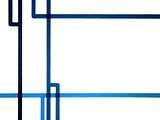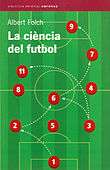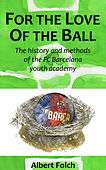Albert Folch Folch
Albert Folch Folch (/foʊk/; born September 25, 1966 in Barcelona, Spain) is a Spanish scientist, writer, and artist. He is currently a professor in the Department of Bioengineering at the University of Washington[1] who is known for his research into Microfluidics and BioMEMS as well as his works of scientific art.
Albert Folch Folch | |
|---|---|
| Born | September 25, 1966 |
| Citizenship | Spain and U.S.A. |
| Alma mater | University of Barcelona |
| Known for | Microfluidics, BioMEMS, Scientific Art. |
| Awards | NSF CAREER Award (2000), NASA's Space Act Award (2006), AIMBE College of Fellows (2015) |
| Scientific career | |
| Fields | Bioengineer |
| Institutions | University of Washington (Seattle), M.I.T., Harvard |
| Doctoral advisor | Javier Tejada (University of Barcelona, Physics Dept.) |
Background
Folch received his B.Sc. in Physics from the University of Barcelona (U.B.) in 1989. In 1994, he received his Ph.D. in Surface Science and Nanotechnology from the U.B.'s Physics Dept. under Dr. Javier Tejada's supervision. During his Ph.D. he was also a visiting scientist (1990–91) at the Lawrence Berkeley Laboratory (Berkeley, California) working on Atomic Force Microscopy under Dr. Miquel Salmeron. From 1994 to 1996, he was a postdoc at M.I.T. developing microdevices under the advice of Martin A. Schmidt (EECS Dept.) and Mark S. Wrighton (Chemistry). In 1997, he joined the laboratory of Dr. Mehmet Toner as a postdoc at Harvard University's Center for Engineering in Medicine to work on BioMEMS and Tissue Engineering. In 2000 he joined the University of Washington's Dept. of Bioengineering (Seattle), where he is an associate professor. In 2001 he received a National Science Foundation CAREER Award, and in 2014 he was elected to the American Institute for Medical and Biological Engineering (AIMBE) College of Fellows Class of 2015.[2] He also serves on the advisory board of the BioMEMS journal Lab on a Chip.[3]
Scientific research and teaching
The Folch Lab[4] works on the interface between microfluidics, cancer, and neurobiology. The lab's long-term mission is to make microfluidic devices as easy to use as smartphones and make them easily available to clinicians in order to enable novel cancer diagnostics and therapies. The lab uses 3D printing and molding approaches to fabricate microfluidic devices that mimic the real microenvironment of nerve and cancer cells when they are cultured outside of the organism. The lab is well known for its microfluidic designs, such as the microfluidic photomasks,[5] a combinatorial micromixer,[6] and a microwell array for optically recording from large numbers of olfactory sensory neurons.[7] However, the long-term goals of the Folch Lab are to produce 3D-printed devices that facilitate access to cancer therapies, in particular personalized chemotherapy and immunotherapy.
As part of the undergraduate and graduate curriculum of the University of Washington's Bioengineering Department, Folch teaches a course on BioMEMS [8] and a course on Cancer Biosensors.
Artistic activity
The Folch Lab produces microscopy images of microchannels and cells that it then uses to run an artistic outreach program called "BAIT", short for "Bringing Art Into Technology".[9] The idea is that the micrographs act as baits to entice people to read the accompanying texts (the science) displayed next to the images. Hence, one comes to the exhibit for an artistic experience and leaves having actually learned some science. While a few of the micrographs are exhibited as obtained by the students without much modification, most pieces are collages, mosaics, and/or mixed-media montages (containing actual devices) made by Folch. However, Folch considers each piece a "collaboration" between him and his students (who are always credited by name, as in a scientific publication).
The Folch Lab art collection now consists of more than 60 printed or framed pieces and is already in its sixth major exhibit. The largest exhibit[10] was at the University of Washington's Allen Library in 2010. In 2013, BAIT was exhibited in the halls of the 2013 Biomedical Engineering Society meeting in the Seattle Convention Center.[11] In 2014, six pieces from BAIT were exhibited during the Mahato Memorial at Duke University,[12] the first time that BAIT was invited outside of Seattle. BAIT has been featured twice on TV (UWTV in January 2012 [13] and NTN24 in November 2014 [14]).
Folch's artistic activity extends into graphic design. He has designed the logo for the University of Washington's Bioengineering Department and Folch Lab's art has been used in a number of brochures of scientific venues.[15] Since 2010, Folch has also been acting as Art Editor for the journal Lab on a Chip, running the "Art on a Chip" website.[16]
 The day that Mondrian visited the lab. By Chris Sip and Albert Folch.
The day that Mondrian visited the lab. By Chris Sip and Albert Folch. Paul Klee's autopsy. By Anna Tourovskaia and Albert Folch.
Paul Klee's autopsy. By Anna Tourovskaia and Albert Folch. Microfluidic Butterfly. By Greg Cooksey and Albert Folch.
Microfluidic Butterfly. By Greg Cooksey and Albert Folch. Logo of the UW BioE department. By Albert Folch.
Logo of the UW BioE department. By Albert Folch.
Literary activity
Folch has written two general science books in Catalan (translated titles: Caught on the Internet and The Science in Soccer), a textbook in English (Introduction to BioMEMS), and a book about soccer in English (For the Love of the Ball").
Caught on the Internet (Editorial Empuries, 1997) teaches what the Internet is about to computer-illiterate audiences, starting from bits and bytes and ending with issues such as social fairness and hackers. This book is in its second edition and an extract of it is used in a textbook for Catalan middle schoolers.
The Science in Soccer (Editorial Empuries, 2004) uses soccer examples to convey science. The book is organized in chapters related to various soccer subjects ("The ball", "The field", "The player", etc.). Inside each chapter we find the answers to questions such as what it would be like to play soccer in each of the planets of the Solar System, why the ball is more than one meter ahead of where we think it really is in a 100 km/h kick (due to delays in the transmission of the nervous impulse), or why soccer balls are made of 12 pentagons and 20 hexagons, etc. This book is also available in e-reader format.
Introduction to BioMEMS (CRC Press, 2012)[17] covers the whole breadth of BioMEMS (Biomedical MicroElectroMechanicalSystems), including classical microfabrication, microfluidics, tissue engineering, cell-based and noncell-based devices, and implantable systems. This textbook is now being adopted worldwide (more than 60 departments in 14 countries).[18]
For the Love of the Ball (Amazon, 2013)[19] tells the history and methods of FC Barcelona's youth academy. Folch also keeps a related blog site, titled La Ciencia del Fútbol,[20] where he talks about FC Barcelona's present state of affairs with a scientific perspective.
Folch also created a large Catalan Poetry Selection.[21] This webpage, originally hosted by M.I.T. and manually typed in 1995 just one year after the World Wide Web started, was, at the time, the first online literary resource of its kind and size in any language. Still widely visited, the selection features 800 poems and 176 Catalan poets spanning ten centuries, including 24 unpublished poets.
 Atrapats a Internet ("Caught on the Internet", 1997)
Atrapats a Internet ("Caught on the Internet", 1997) La Ciència del Futbol ("The Science in Soccer", 2004)
La Ciència del Futbol ("The Science in Soccer", 2004) For the love of the ball (Amazon, 2013)
For the love of the ball (Amazon, 2013)
Media coverage
The Folch Lab has been featured in The New York Times (February 2, 2003, Technology section),[5] Science News (February 15, 2003 issue), Physics World (March 2003 issue), Materials Today (April 2003 issue), Photonics Spectra (April 2003 issue), BioPhotonics International (May 2003 issue),[22] Proto (Fall 2008 issue), The Washington Post (October 28, 2008, Health section),[6] UWTV (January 2012),[13] and NTN24 (November 2014).[14]
Awards and honors
- 2000 NSF CAREER Award
- 2006 NASA Space Act Award.
- 2014 AIMBE College of Fellows Class of 2015
Exhibits
- 2009 Art exhibit at the Harborview Medical Center (March 2009).
- 2009 Art exhibit at the University of Washington's Meany Theater (September 2009 – September 2010).
- 2010 Art exhibit at the University of Washington's Allen Library (November 2010 – March 2011).
- 2013 Art exhibit at the 2013 Biomedical Engineering Society Meeting (Seattle, October 2013)
- 2014 Art exhibit at Duke University's 2014 Mahato Memorial[23]
References
- "Faculty and Staff: Albert Folch". Department of Bioengineering, University of Washington. Retrieved 2015-11-25.
- Wright, Laura Elizabeth (2015-03-24). "Suzie Pun, Albert Folch inducted as 2015 AIMBE Fellows". Department of Bioengineering, University of Washington. Retrieved 2015-11-25.
- "Lab on a Chip website". Pubs.rsc.org. Retrieved 2011-10-25.
- "Folch Lab Homepage". Faculty.washington.edu. Retrieved 2011-10-25.
- "New York Times article on the Folch lab's microfluidic photomasks". Nytimes.com. 2003-02-20. Retrieved 2011-10-25.
- "Washington Post article on the Folch lab's combinatorial micromixer". Faculty.washington.edu. Retrieved 2011-10-25.
- "Press coverage on (and link to) a Folch Lab paper on olfactory sensory neurons in a microwell array". Rsc.org. 2007-06-13. Retrieved 2011-10-25.
- Albert Folch. "Link to BioMEMS course taught by Albert Folch". Courses.washington.edu. Retrieved 2011-10-25.
- "Folch Lab ART Webpage". Faculty.washington.edu. Retrieved 2011-10-25.
- "Folch Lab Exhibit at UW Allen Library". 2010-11-10. Retrieved 2011-10-25.
- "Folch Lab Exhibit at 2013 BMES meeting". 2013-10-30. Retrieved 2013-10-30.
- "Mahato Memorial- BAIT presentation by Albert Folch". YouTube. 2014-11-28. Retrieved 2014-11-28.
- "Link to UWTV feature program on BAIT". 2012-01-10. Retrieved 2013-11-20.
- "Link to NTN24 Interview by Luis Quevedo". 2014-11-25. Retrieved 2014-11-25.
- "Brochures designed by the Folch Lab". Folch Lab. Retrieved 2014-06-15.
- "Art on a Chip website". Flickr.com. Retrieved 2011-10-25.
- "Link to Albert Folch's textbook, "Introduction to BioMEMS", published by CRC Press (528 pages)". CRC Press. 2012-03-15. Retrieved 2012-04-27.
- "Link to Albert Folch's textbook webpage". Retrieved 2015-10-22.
- Link to Albert Folch's book on FC Barcelona's youth academy, "For the Love of the Ball". 2013-10-20. ISBN 978-1492924272.
- "Link to Albert Folch's blogsite, "La Ciencia del Fútbol" (afolch.blogspot.com)". 2014-05-01. Retrieved 2014-05-01.
- "Selection of Catalan Poetry by Albert Folch". Lletra.uoc.edu. Retrieved 2011-10-25.
- Hogan, Hank (May 2003). "Photolithography goes with the flow" (PDF). BioPhotonics International. Laurin Publishing Company. Retrieved 2015-11-27.
- "2014 Keynote Speaker: Pr. Albert Folch". Pratt School of Engineering. Retrieved 2015-11-25.